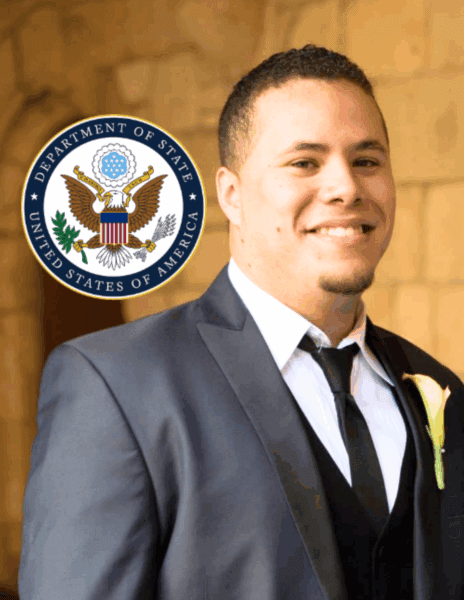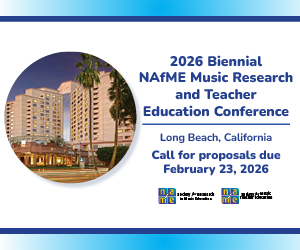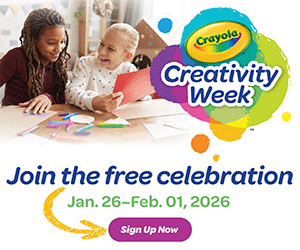/ News Posts / Being More Than “Just a Music Educator”
Being More Than “Just a Music Educator”
The Five Ps of Vocational Alignment
By NAfME Member José Valentino Ruiz, Ph.D.
Abstract
In today’s convoluted educational and cultural climate, music educators are increasingly required to lead beyond the podium. This editorial reframes the identity of the music educator through the lens of vocational multiplicity, introducing a practical and inspiring model that emphasizes purpose, integration, and clarity. Through the adapted “Five Ps of Vocational Alignment,” readers are encouraged to embrace the multifaceted nature of their work not as a burden, but as a vocational constellation that yields resilience, creativity, and enduring student impact.
The Myth of the “Just a Teacher” Label
We’ve all heard it: “So, you’re just a music teacher?” The phrasing seems harmless, even complimentary to those outside the profession. But to those of us immersed in the world of music education, it can feel like an erasure of complexity, intention, and leadership.
Because you are never just a teacher.
You are a curriculum designer, a cultural diplomat, an ensemble coach, a counselor, a career coach, a fundraiser, a festival organizer, and a data analyst. You translate Bach for eighth graders at 8:00 AM and mediate parent-principal dynamics by noon. In the evening, you might be directing a jazz band at a civic event, producing student recordings, or updating grant proposals.
To be a music educator is to live in multiplicity.
Yet, we’ve inherited a vocational narrative that treats diversification as dilution. We’ve been taught that to be taken seriously, we must simplify our story: “Pick one thing. Stay in one lane.” But in a world that is increasingly interdisciplinary, volatile, and creative-economy-driven, staying in one lane is not only unrealistic—it’s unwise.
It’s time for a new metaphor. A more accurate, empowering framework.
Why Music Educators Lead Beyond the Classroom
The field has shifted. What once was a primarily school-bound role has become a launchpad for systemic change, arts entrepreneurship, and community transformation.
Consider the current educational landscape. Many music educators are leading initiatives far beyond their teaching assignments:
- Designing digital music curricula and publishing content online
- Directing nonprofit music organizations
- Creating culturally responsive programs for underserved youth
- Composing original works that address social issues
- Serving as consultants for arts integration in STEM education
- Building interdisciplinary maker spaces and sound labs
These aren’t anomalies. They are signals of an evolving profession.
According to a recent Arts Education Partnership report, music teachers are among the most likely educators to cross into leadership roles involving technology, community engagement, and wellness initiatives. And with the rise of culturally relevant pedagogy, trauma-informed education, and cross-curricular collaboration, the demands—and opportunities—have only deepened.
But the question remains: How do we lead well when the job seems to have no borders?
From Identity to Integration: The Power of a Purpose-Driven Career
The solution isn’t to simplify. It’s to integrate.
Borrowing from a leadership framework I’ve used with educators, artists, and creative entrepreneurs, I present the Five Ps of Vocational Alignment—an introspective tool to help music educators bring intentionality to their layered work. When you clarify why you do what you do and align your roles accordingly, what may have felt like chaos becomes a cohesive, purpose-driven constellation.
When you clarify why you do what you do and align your roles accordingly, what may have felt like chaos becomes a cohesive, purpose-driven constellation.
1. Purpose:
What unifies your work? What legacy do you want to leave through your teaching, music-making, and leadership? For many music educators, purpose stems from a deep commitment to student flourishing and community transformation through the power of sound.
2. Platform:
What roles and projects best express that purpose? This may include classroom teaching, professional performance, podcasting, festival direction, or policy advocacy. Choose platforms that amplify your mission rather than just fill your calendar.
3. Patterns:
How will you sustain your energy, creativity, and emotional health? Consider the rhythms you need: Sabbaths, technology boundaries, seasonal shifts, and margin for creative work that isn’t always “productive.”
4. Partnerships:
Who are your trusted collaborators across disciplines and institutions? Healthy, mission-aligned partnerships multiply impact while distributing the weight of leadership.
5. Pace:
What growth velocity is realistic for your current season of life? Pacing isn’t about slowing down—it’s about strategic speed. Some seasons call for expansion; others demand refinement.
This model does not ask you to do more. It invites you to do with clarity. It is a vocational compass for complexity.
Cross-Pollination Fuels Innovation in Music Education
Here’s what’s often missed in discussions about multiplicity: It’s not just about capacity—it’s about innovation.
Educators who perform regularly often teach with more musicality. Composers who write for their students produce culturally relevant, accessible repertoire. Researchers who teach bring the latest findings into practice. Technology leaders who experiment in DAWs bring new life to theory classes.
These intersections are where innovation happens.
In Originals, Adam Grant writes, “The most original thinkers are not always the deepest in a single field—they are often the broadest. They draw insight from unexpected places and combine ideas in ways others cannot see” (Grant, 2016, p. 19).
Music educators are uniquely poised for this kind of innovation. You’re already blending disciplines—music, history, math, psychology—daily. When this creative integration is embraced rather than resisted, you become a hub of innovation for your institution and community.
Leading with Multiplicity: Lessons for the Next Generation
Our students are watching. And they’re asking, What does a life in music look like?
If all they see is overwork, underpayment, and administrative frustration, we lose them. But if they see a mentor who is alive in their craft—teaching, creating, performing, collaborating—they glimpse a model worth following.
The constellation model is not just for us. It’s a gift to our students.
By living into a multifaceted, mission-driven identity, you teach your students how to build adaptive, creative lives. You show them that music is not just a skill—it’s a system of impact. A method for reaching people, shaping culture, and creating meaning.
You’re not preparing students for a singular path. You’re preparing them to be musical citizens who thrive in many contexts: as performers, educators, engineers, therapists, advocates, and entrepreneurs.
This is the future of music education. And it starts with what we model.
Reframing Professionalism in Music Education
Too often, professionalism in our field is equated with formality, hierarchy, or institutional conformity. But what if we reframed it?
What if true professionalism meant living a life of intentional multiplicity, where everything you touch—lesson plans, ensembles, concert programs, grant writing, research—was part of a bigger story?
What if your professional worth wasn’t determined by your title, but by your testimony?
Music educators are professional creatives—and that means we build ecosystems, not just lesson plans. We cultivate belonging. We adapt and lead in new formats. We experiment and document. We build bridges between tradition and transformation.
That’s not just professional. That’s visionary.
Teaching as a Launchpad, Not a Limitation
Teaching is not a fallback plan. It is not second to performing, composing, or research.
It is a launchpad—a dynamic space from which great things emerge. Within a classroom, rehearsal hall, or virtual studio, you can birth projects, elevate voices, and cultivate change. From that place, you can also lead—across organizations, industries, and even nations.
Let’s reclaim the idea that music educators are some of the most strategically positioned creative leaders in our culture.
Whether your work takes you into a school building, a recording studio, a local board meeting, or a Zoom call with international collaborators—know this: You are not “just a teacher.” You are a constellation of callings. And your light matters.
Final Thoughts: Don’t Shrink Your Story
If you’ve ever felt the pressure to shrink your story to fit someone else’s expectations, let this be your release.
You do not need to contort your calling to meet outdated definitions of professionalism or leadership. You don’t have to collapse your identity into one title. You don’t need permission to be the multi-dimensional educator, artist, and leader you already are.
The world doesn’t need more uniformity. It needs creative leaders who know who they are, why they lead, and how to align their gifts with purpose.
So when someone asks, “What do you do?” Don’t just say, “I teach music.”
Say, “I build futures through sound.”
Say, “I help students find their voice.”
Say, “I lead change through education, performance, and community.”
Because that’s the truth. You are more than a music educator. You are a cultural architect. A vocational storyteller. A leader in the making—and already leading.
And we’re all better because you chose to teach.
References
Grant, A. (2016). Originals: How Non-Conformists Move the World. Viking.
Palmer, P. J. (2000). Let Your Life Speak: Listening for the Voice of Vocation. Jossey-Bass.
Arts Education Partnership. (2023). ArtsEdSearch: Research and Policy on Arts Education.
Arts Education Data Project. (2023). State-by-State Report on Arts Instruction in Public Schools.
About the author:
 Appointed in 2025, NAfME member Dr. José Valentino Ruiz is the inaugural U.S. Speaker of Creative Economy and Global Arts Entrepreneurship for the U.S. Department of State’s Office of the U.S. Speaker Program. A multi-award-winning artist-scholar, he is a four-time Latin GRAMMY® Award Winner and four-time Latin GRAMMY® Award Nominee and EMMY® Award recipient, as well as the record holder with 55 DownBeat® Music Awards and 33 Global Music® Awards. As an internationally touring flutist, saxophonist, and bassist, he has headlined more than 1,400 concerts across six continents and produced more than 150 albums, 10 documentaries, and 200+ scholarly publications. Operating multiple ventures, Dr. Ruiz serves as 1) Founder & CEO of JV Music Enterprises and 2) Founder, Tenured Associate Professor, and Program Coordinator of the Music Business & Entrepreneurship program at the University of Florida. Additionally, he is 3) Affiliate Researcher at the USF Center for Music Education Research, and 4) Expert Columnist on Music Business & Creative Enterprise Leadership for F-flat Books. His work bridges performance, scholarship, education, and leadership across the creative industries. For more information, visit: www.josevalentino.com.
Appointed in 2025, NAfME member Dr. José Valentino Ruiz is the inaugural U.S. Speaker of Creative Economy and Global Arts Entrepreneurship for the U.S. Department of State’s Office of the U.S. Speaker Program. A multi-award-winning artist-scholar, he is a four-time Latin GRAMMY® Award Winner and four-time Latin GRAMMY® Award Nominee and EMMY® Award recipient, as well as the record holder with 55 DownBeat® Music Awards and 33 Global Music® Awards. As an internationally touring flutist, saxophonist, and bassist, he has headlined more than 1,400 concerts across six continents and produced more than 150 albums, 10 documentaries, and 200+ scholarly publications. Operating multiple ventures, Dr. Ruiz serves as 1) Founder & CEO of JV Music Enterprises and 2) Founder, Tenured Associate Professor, and Program Coordinator of the Music Business & Entrepreneurship program at the University of Florida. Additionally, he is 3) Affiliate Researcher at the USF Center for Music Education Research, and 4) Expert Columnist on Music Business & Creative Enterprise Leadership for F-flat Books. His work bridges performance, scholarship, education, and leadership across the creative industries. For more information, visit: www.josevalentino.com.
Interested in reprinting this article? Please review the reprint guidelines.
The National Association for Music Education (NAfME) provides a number of forums for the sharing of information and opinion, including blogs and postings on our website, articles and columns in our magazines and journals, and postings to our Amplify member portal. Unless specifically noted, the views expressed in these media do not necessarily represent the policy or views of the Association, its officers, or its employees.
Published Date
July 15, 2025
Category
- Careers
- Innovation
- Music Education Profession
Copyright
July 15, 2025. © National Association for Music Education (NAfME.org)






